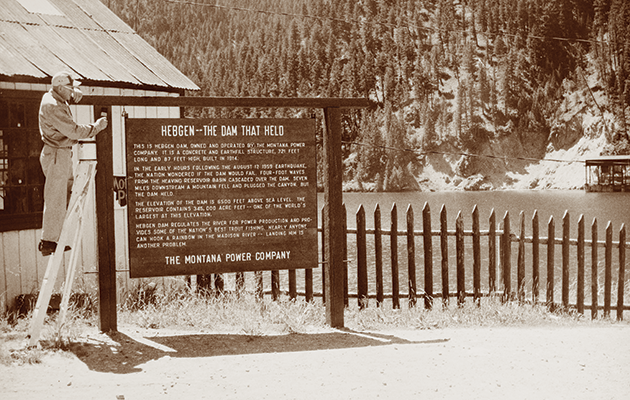
Hebgen
About Hebgen
South of the Madison Dam, just north of the Idaho border near Yellowstone National Park is our Hebgen Lake storage reservoir. Construction began on the dam in 1910 but faced several obstacles, delaying its completion until 1915. When it was completed, the reservoir was the seventh largest in the world, holding a volume of 386,000 acre-feet and is used to store water from a 905-square-mile drainage area at the headwaters of the Madison Missouri River system.
Though Hebgen Reservoir may not generate electricity itself, it fulfills its purpose by regulating the water flow to the Madison River. An early report showed that the dam could increase the output of the downstream Madison and Rainbow dams by as much as 40%. NorthWestern Energy also uses the Hebgen Dam to ensure the health of the Madison River system, a popular destination for anglers worldwide.
Historic namesake
.jpg 1x)
Historic namesake
Named for Max Hebgen, a man known nationally in the field of electric development. The idea of developing a storage reservoir in the Madison Canyon near West Yellowstone was originated by Hebgen. He also played a large role in the development of several hydroelectric dams, the construction of a transmission line from Rainbow Dam to Butte in 1910, and also saw the potential of using electricity to serve Montana's communities and towns.
Hebgen suffered from heart disease and traveled to Chicago in John Ryans's private train car for treatment before his death at age 45 in 1915. An obituary for Hebgen noted that he died before his namesake dam was completed, and that he "preferred a life of study and accomplishment to a career in which relaxation played any part."
The dam that held

The dam that held
Hebgen dam functioned for decades with no major incident until August 17, 1959, when a catastrophic 7.5 magnitude earthquake struck near the dam. Downstream, damage from the earthquake can be measured in human lives lost. A landslide killed 28 people, many of whom were camped just below the dam. This same landslide formed a large blockage in the Madison River, in turn forming quake lake.
The dam held but was significantly damaged in several areas. Repair work was completed in 1960 at a cost of about $315,000.


